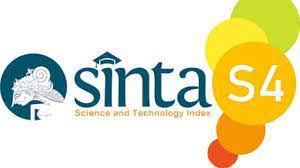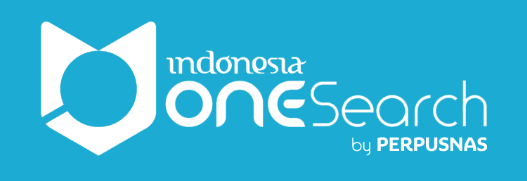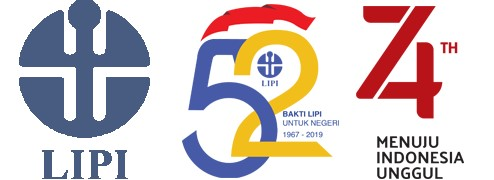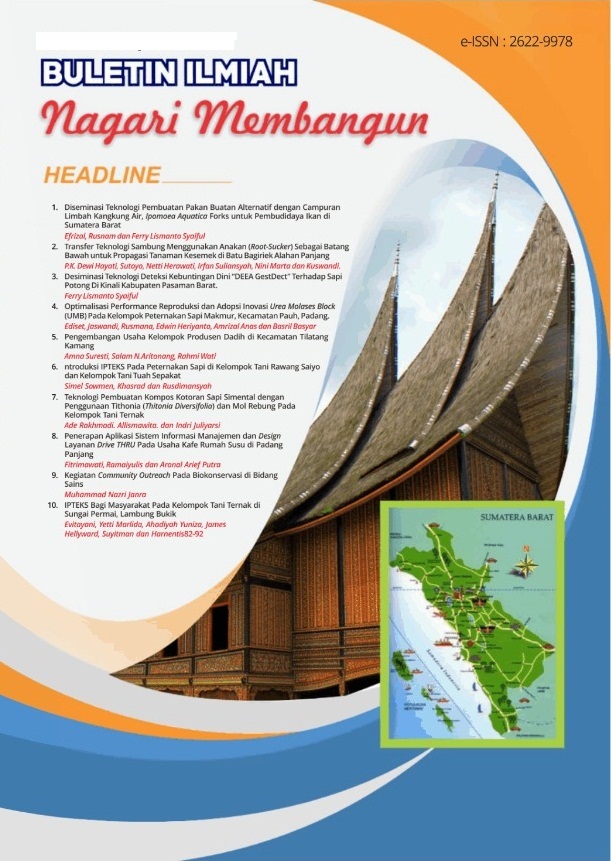PROMOSI POLA HIDUP SEHAT DAN MAKANAN BERGIZI PADA KELOMPOK RENTAN GIZI SELAMA PANDEMI COVID-19 DI KOTA PADANG
Abstract
The condition of the COVID-19 pandemic that has hit the world, including Indonesia, which can cause death, requires the public to take preventive measures. One of the efforts that can be made so as not to be exposed to COVID-19 is to increase a healthy lifestyle and consumption of nutritious food during the COVID-19 pandemic. The purpose of education is to improve healthy lifestyle and consume nutrtitious food for vulnerable groups. The targets of this activity is children under-fives, pregnant women, and the elderly as many as 17 targets who are in the working area of Pauh Puskesmas and Puskesmas Padang Pasir, Padang City. The method is carried out by means of counseling which begin by visiting the target house, which is then carried out through WhatsApp (WA) social media. In educational activities, service providers, through the media leaflets and posters that have been designed, are then conveyed directly to the service target and through social media, namely the WA group. Educational activities during the pandemic went quite well was followed by 17 mothers with children under five and elderly. This was shown with a quite high enthusiasm when the activity begins and some target asked the questions related to material that had not been understood and then answered by the service provider. Various efforts and strategies are needed from health workers so that educational activities can still be carried out for the community in breaking the chain of the spread of COVID-19.
Downloads
References
Azrimaidaliza et al. (2019) ‘Optimalisasi tumbuh kembang balita melalui promosi gizi seimbang di Kecamatan Koto Tangah Padang’, LOGISTA - Jurnal Ilmiah Pengabdian kepada Masyarakat, 3(2), pp. 17–26. doi: 10.25077/logista.3.2(jul-des).17-26.2019.
Dinas Komunikasi dan Informatika Kota Padang. (2020). Situasi dan Perkembangan Covid-19. Available at: corona.padang.go.id (Accessed: 22 April 2020).
Elliyanti, A. et al. (2019) ‘Identifikasi masalah dan penyuluhan kesehatan pada lanjut usia di Nagari Sumanik’, Jurnal Hilirisasi IPTEKS, 2(1), pp. 64–69.
Gugus Tugas Percepatan Penanganan COVID-19 (2020) Data Sebaran Virus Corona di Provinsi Sumatera Barat Update 23 April 2020. Available at: https://corona.sumbarprov.go.id/details/peta_covid19 (Accessed: 7 September 2020).
Halajur, U. (2018) Promosi Kesehatan di Tempat Kerja. Wineka Media, Jakarta.
Hartati, B., Sarfika, R. and Putri, D. E. (2019) ‘Implementasi pendidikan kesehatan dengan metode brainstorming terhadap pengetahuan remaja tentang tumbuh kembang di Pauh Kota Padang’, Jurnal Hilirisasi IPTEKS, 2(1), pp. 14–23. doi: 10.25077/jhi.v2i1.226.
Insani, A. A. et al. (2019) ‘Deteksi dini komplikasi kehamilan dan pertumbuhan serta perkembangan balita, perilaku hidup bersih dan sehat di wilayah kerja Puskesmas Pegambiran Kota Padang’, Buletin Ilmiah Nagari Membangun, 2(4), pp. 457–469.
Laksono, H. D. et al. (2016) ‘Peningkatan kemampuan promosi dan komunikasi pusat kegiatan belajar masyarakat (PKBM) karang putih melalui pengembangan website berbasis open source’, Jurnal Ilmiah Pengembangan dan Penerapan Ipteks, 23(2), pp. 1–7. Available at: http://wartaandalas.lppm.unand.ac.id/index.php/jwa/article/view/28.
Rahmy, H. A. et al. (2020) ‘Edukai gizi pedoman gizi seimbang dan isi piringku pada anak Sekolah Dasar Negeri 06 Batang Anai Kabupaten Padang Pariaman’, Buletin Ilmiah Nagari Membangun, 3(2), pp. 162–172.
Sarfika, R., Fernandes, F. and Mailia, G. (2019) ‘Pemberian pendidikan kesehatan untuk meningkatkan pengetahuan keluarga dalam merawat lansia demensia di Puskesmas Pauh, Kota Padang’, Jurnal Warta Pengabdian Andalas, 26(2), pp. 97–101. doi: 10.25077/jwa.26.2.97-101.2019.
Susilo, A. et al. (2020) ‘Coronavirus diseaes 2019: tinjauan literatur terkini’, Jurnal Penyakit Dalam Indonesia, 7(1), pp. 45–67. doi: 10.25104/transla.v22i2.1682.
Yunus, N. R. and Rezki, A. (2020) ‘Kebijakan pemberlakuan lock down sebagai antisipasi penyebaran corona virus covid-19’, SALAM: Jurnal Sosial dan Budaya Syar-i, 7(3), pp. 227–238. doi: 10.15408/sjsbs.v7i3.15083.





















